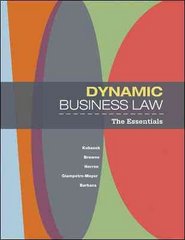Question
Suppose there are only two countries in the world: CanLand and Everywheresville. Each country produces the same good (Y ) whose price in the world
Suppose there are only two countries in the world: CanLand and Everywheresville.
Each country produces the same good (Y ) whose price in the world market is Pw = $15
(to make life simple, we'll assume that the world price is exogenously determined).
CanLand's production of good Y can be described using the Cobb-Douglas production
function: Yc = 1.2(K)^0:6 L^0.4 and Everywheresville's production of good Y can be
described using the Cobb-Douglas production function: YE = 0.5(K)^0.2 (L)^0.8. To
continue to make our lives as easy as possible, assume that the countries use the same
currency.
Let each country have a perfectly competitive labour market with a perfectly inelastic
labour supply. Also assume the amount of capital will not depreciate or change over
time with CanLand having Kc = 60 and everywheresville having Ke = 20.
(a) What is the labour demand in each country (i.e. derived demand, wC and wE)?
(b) If CanLand has labour of Lc = 75 and Everywheresville has labour of Le = 120,
what are the wages in each market? Which of the two countries would attract
economic migrants?
(c) Why might some people from country with the higher wage choose to migrate to
the country with the lower wage?
(d) Show that the labour's share of national income (w * L) is equal to 40% in
CanLand.
(e) If CanLand and Everywheresville both had open borders (i.e. anyone could move
there), how many people would live in CanLand and how many people would
live in Everywheresville? (Hint/Reminder: Use your result from part (a) and set
wC = wE.)
Step by Step Solution
There are 3 Steps involved in it
Step: 1

Get Instant Access to Expert-Tailored Solutions
See step-by-step solutions with expert insights and AI powered tools for academic success
Step: 2

Step: 3

Ace Your Homework with AI
Get the answers you need in no time with our AI-driven, step-by-step assistance
Get Started


